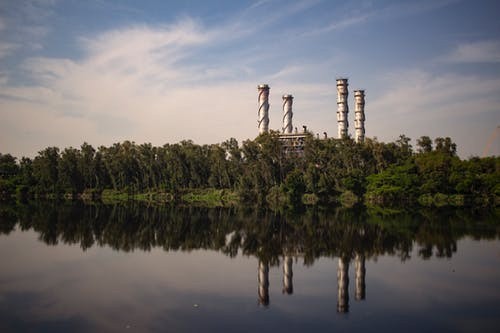
The COVID-19 pandemic made governments impose quarantine measures and lockdown in many countries, causing air pollution to plummet to such levels that have not been seen in a very long time. Pictures of clear skies in areas that used to be obscured by pollution and fog are now widespread.
Delhi residents could not believe the city's new "alpine" air quality. It was only less than half a year when Delhi's air quality deteriorated to "unbearable levels," according to authorities. Because of the pollution, schools were closed; flights had been diverted; and the people were told to wear masks, keep windows and doors shut, and avoid polluted areas.
Fourteen cities in India, including Delhi, are among the 20 most polluted in the world. Over one million Indian deaths are estimated to occur each year from diseases associated with air pollution. Man-made activities in industries, crop and trash residue burning, roads, construction, and motor vehicles all contribute to pollution.
Due to the lockdown, federal pollution control officials reported a significant air quality improvement in 85 cities. Urban Emissions head Sarath Guttikunda wants to take advantage of the unprecedented opportunity to study how air pollution levels changed by the pandemic. Urban Emissions is a private research group that provides forecasts on air quality.
Guttikunda's research team studied data produced by roughly one hundred air quality monitoring stations set up all over the country. They concentrated on Delhi, which has over 20 million residents. During the previous winter, levels in Delhi was over 20 times higher than the safe limit set by WHO.
PM 2.5 is by far the most dangerous particle in Delhi's air. PM 2.5 increases susceptibility to cardiovascular and respiratory diseases; it is primarily spewed by combustion from vehicles, fires, and power plant operations. Urban Emissions found that Delhi's PM 2.5 levels went down to 20ug/m3 with an average of 35 during the 20-day lockdown period. Average monthly levels between the years 2017 and 2019 were four times that level.
Guttikunda noted that the level of 35 during a time when local emissions are limited indicates that a minimum of 70% of air pollution is generated locally. And the significant reduction in PM 10, which was mainly due to dust from roads, construction, and vehicle emissions, was due to 90% of all vehicles disappearing from the road.
Centre for Research on Energy and Clean Air's Sunil Dahiya also tracked levels of air pollution during India's lockdown. He says that clean and breathable air is quickly achievable if fossil fuel burning is significantly reduced.
Council on Energy, Environment, and Water CEO Arunabha Ghosh hopes the current experience could trigger a demand for clean air. Crises usually trigger policy changes, such as the 4-day pea-souper in London spurring the passing of the Clean Air Act, the APEC blue efforts by China, and the Super Cool Biz energy campaign in Japan after the Fukushima disaster.
India can also use the inevitable stimulus to kickstart green industries. After all, experts say that renewables create more jobs than the fossil fuels and coal, and India has created almost 100,000 new jobs in the wind and solar energy industry. Also, the significant price reduction of oil can provide rebates for factories to install equipment for emission control.
Ghosh says India needs to learn the economic lessons brought by the pandemic in terms of sustainable development and jobs; cleaning the air may be the key. He adds that if China could reduce 32% of air pollution in less than five years, India can do it too and pledge 80% pollution reduction in 80 of its cities by India's 80th independence anniversary in 2027.
© 2025 NatureWorldNews.com All rights reserved. Do not reproduce without permission.





